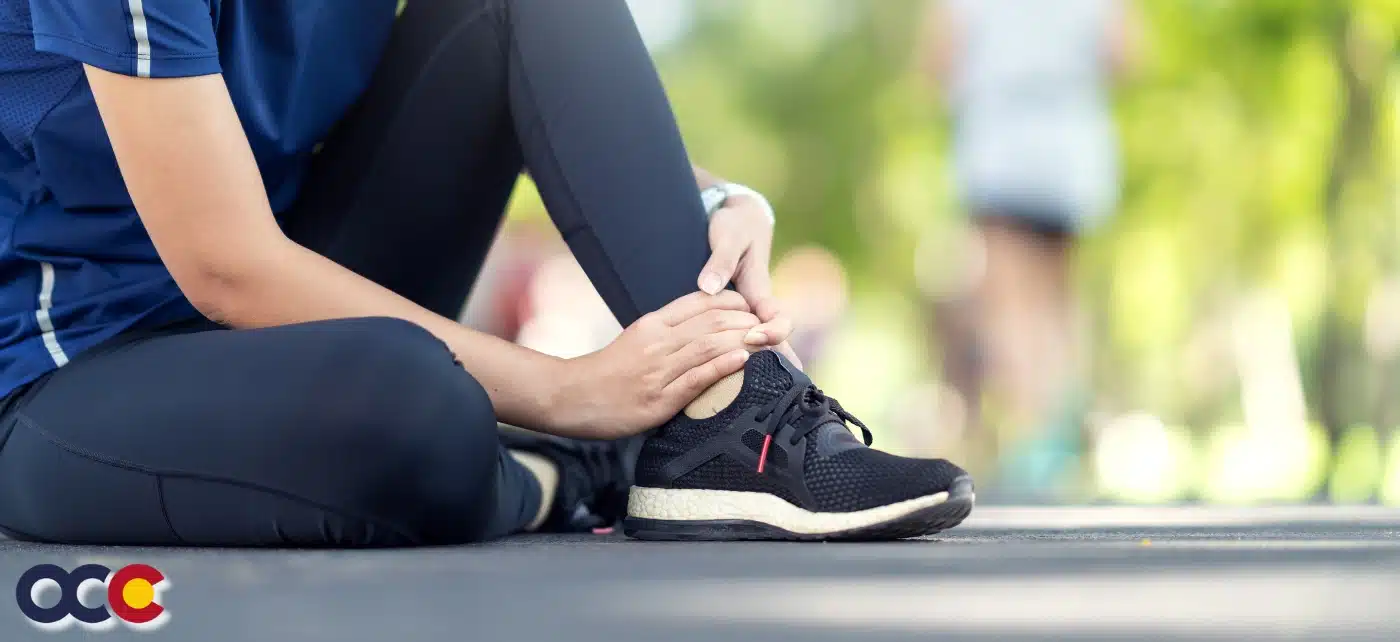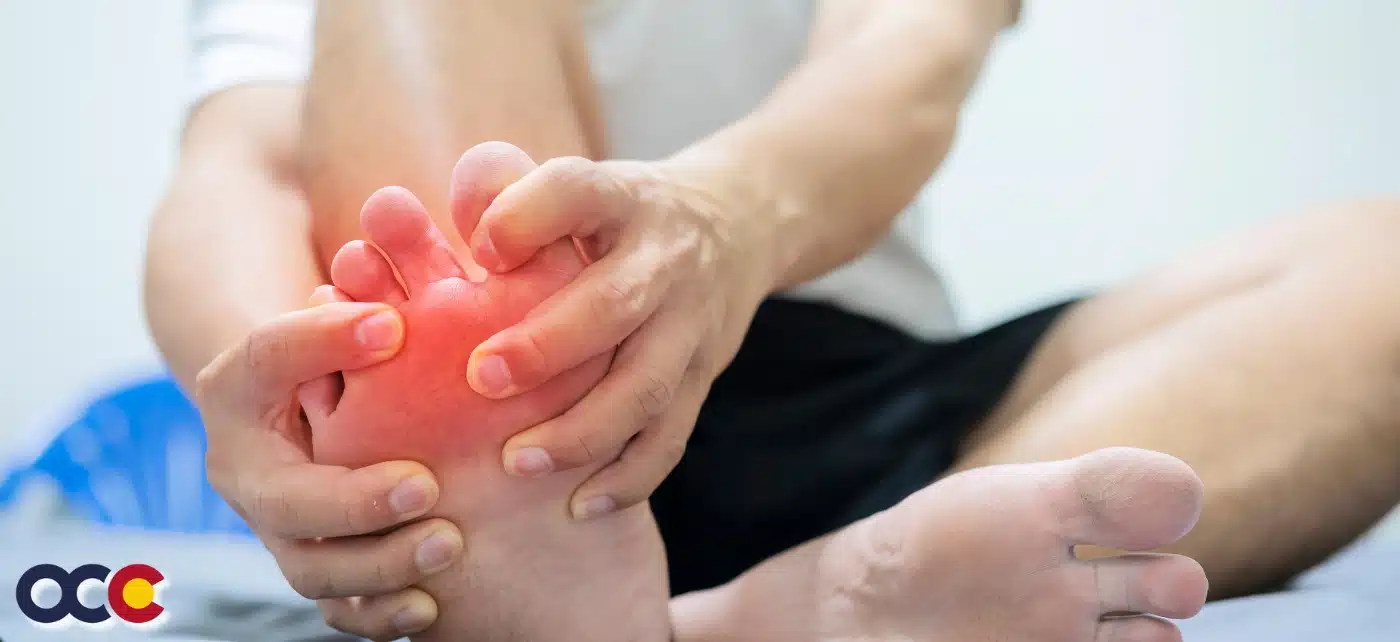Denver – bunion treatment can be the difference between walking with a spring in your step or nagging bunion pain that has you walking on egg shells. Bunion pain affects approximately one-third of the population and disproportionately impacts those who’s occupation requires long periods of standing or walking.
What is a bunion?
Bunions – bony bumps that form at the base of the big toe and produce a wider than usual foot profile – are the result of excess bone growth or bone misalignment that causes the big toe to press against the second toe, causing rubbing of the bump in shoegear.
What causes bunions and bunion pain?
There’s a good reason why bunion pain can be so significant: because we wear shoes.
There are many factors that lead to bunions but they all share a common trait: they progressively worsen over time. Arthritis, trauma, or skeletal structure may produce a bunion but frequently bunions can be traced to your family tree. Bunions are more common in females (who are nearly 10 times more likely to develop bunions) because many female shoes place feet in tight, unnatural, and structurally unstable positions.
Bunion treatment: How do I treat bunion pain?
Bunion treatment ranges from conservative options to surgery. The most common conservative bunion treatment involves modifying footwear, reducing swelling and managing pain. Changing footwear to provide your expanded foot more room or incorporating foot pads and inserts to better distribute the stress and pressure can help more moderate bunion pain. Applying ice after long periods of on your feet also helps reduce swelling; and pain medications and anti-inflammatories ranging from over the counter options like ibuprofen, to cortisone injections focus on delivering much-needed pain relief.
How do I know if I need bunion surgery?
Bunions are easy see at the base of the big toe, or on the side of your foot. The condition is progressive – meaning that they typically get worse, not better over time and these changes may be visibly apparent. If your bunion pain is impacting your daily life, it’s time to get an expert diagnosis. To provide a comprehensive evaluation, your orthopedic/podiatric surgeon will do a physical exam, and also take x-rays to see the severity of your bunion and any change over time.
Depending on the progression of your bunion, your surgeon will work with you to determine the best treatment plan, which may include bunion surgery.
If surgery is the best resolution for your bunion pain, your doctor will outline what the procedure entails, which could involve removing bone, or may require bone realignment or permanent bone fusion.
How long does bunion surgery recovery take?
Recovery, like surgical treatment options, varies by patient. While some patients can walk immediately after surgery, most have a weeks or months-long recovery that is determined by patient condition, age, fitness and how involved of a surgical treatment was required to provide relief. But with a full recovery, bunion patients typically experience total relief from their bunion pain and full return to activity.
If you invest in bunion surgery, be sure to protect your feet during and after recovery and know that supportive footwear is a must.
Spring is time to put the boots away, show off a new pedicure, and forget about bunion pain. The Advanced Orthopedics team can help you to put your best foot forward. Enjoy the weather, but take care of your feet. Schedule an appointment today with podiatrist and Denver foot and ankle surgery expert Dr. Keith Jacobson to put the spring back in your step!









